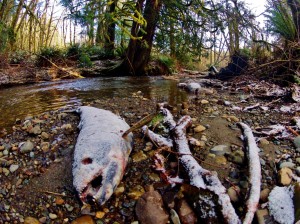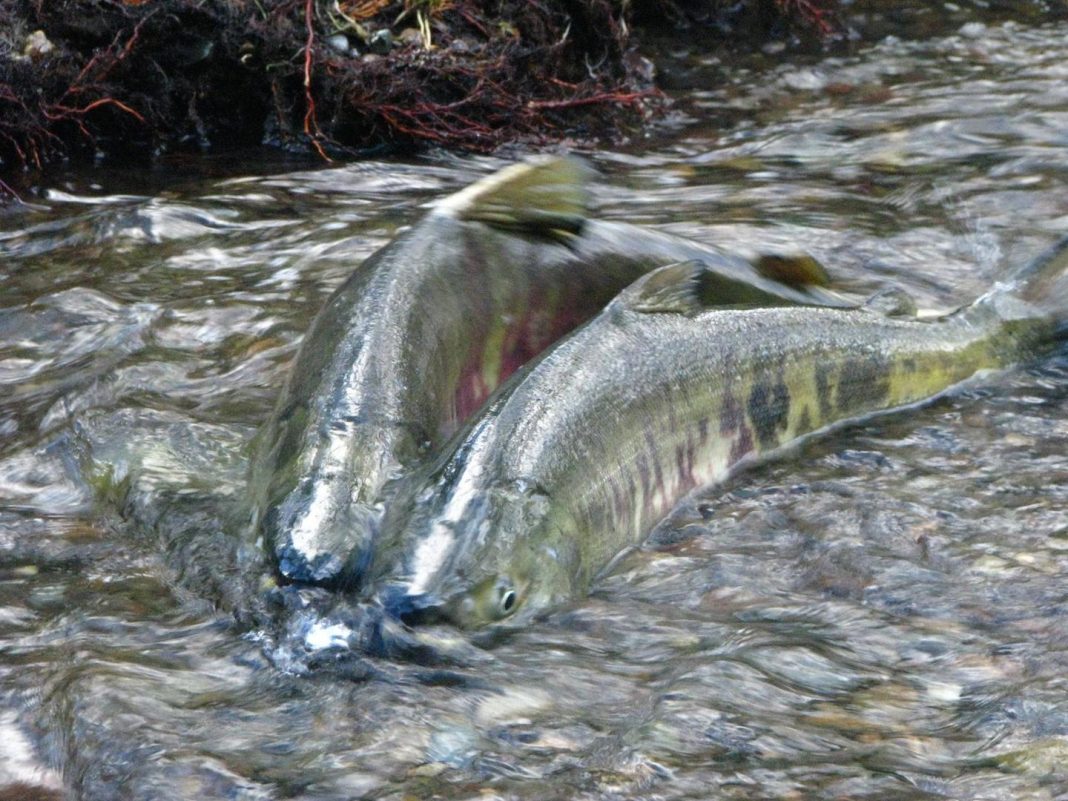The source of the problem was a mystery. A golden retriever living in a fenced yard on a property near Puget Sound displayed unmistakable symptoms of salmon poisoning, yet as far as the owners knew, no salmon or other fish could possibly have gotten into their yard.

After some investigation, they discovered that the culprit was a local osprey. In the course of feeding its young in a nest high above the couple’s yard, the raptor had dropped a fish which the dog later discovered.
While most mammals can eat raw fish with impunity, for dogs, they can be deadly. Salmon and other fish that swim upstream to breed, such as trout, can be infected with a parasite known as Nanophyetus salmincola. Harmless in itself, the parasite turns lethal when it is in turn infected by an organism called Neorickettsia helminthoeca.
Pet owners may not realize their dog has been infected because it takes between 7 and 10 days for symptoms to appear, says Dr. Blair Burrgren of Olympia Pet Emergency. “Fever is a big sign, but you’ll also see things like lethargy, decreased appetite, vomiting and diarrhea as well as enlarged lymph nodes.” The sooner dogs are brought in, the better their odds of survival, he advises. “We’re able to save almost 100 percent of dogs with salmon poisoning, but if they’ve already been sick for 5 to 7 days it gets much harder to pull them through. If they’re not treated, 85 percent of them will not survive.”
Treatment for fish poisoning depends on what stage of the illness a dog is in, he says. “Some proactive pet owners will notice that their dog just got into a salmon and we’re able to put the dog on the appropriate antibiotic and stave off all infections before they get sick,” he says. For dogs that are further down the line, his best recommendation is that the dog be admitted and kept for 24 hours on IV fluids, anti-nausea drugs and antibiotics.

Most dogs are able to recover and even develop an immunity to the bacteria. “Generally there are no lasting effects once they recover fully,” says Dr. Burrgren. “Technically, they can get it twice. There’s a second strain of this bacteria called elokomin fluke fever that’s pretty rare and looks exactly the same.” When he worked in general practice, Dr. Burrgren even encountered some fishing enthusiasts who would intentionally infect their dogs in order to make them immune so that they could safely accompany their owners on fishing trips.
The best way to prevent poisoning is to make sure any fish is thoroughly cooked. “That’s the only way to make sure it’s not infected,” says Dr. Burrgren. “Even if it’s been frozen, that can still make them sick.” The parasites that cause the infection are specific to the Northwest, ranging from Northern California through British Columbia.
The important thing to remember is that time matters. “It’s preventable, treatable and curable,” Dr. Burrgren assures dog owners.
For more information about Olympia Pet Emergency visit the Olympia Pet Emergency website or call 360-455-5155.
Sponsored




















































